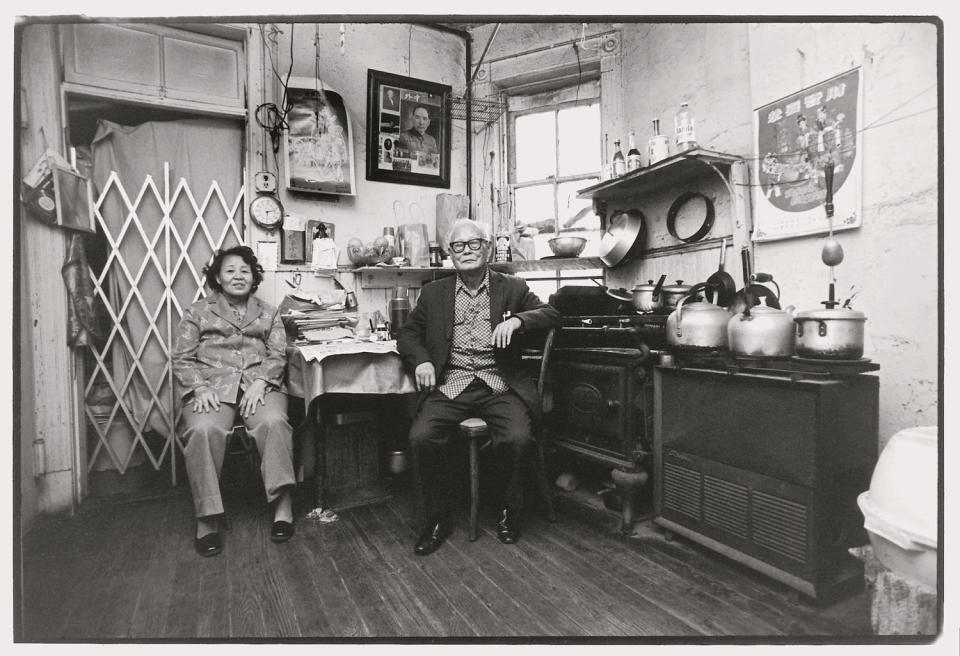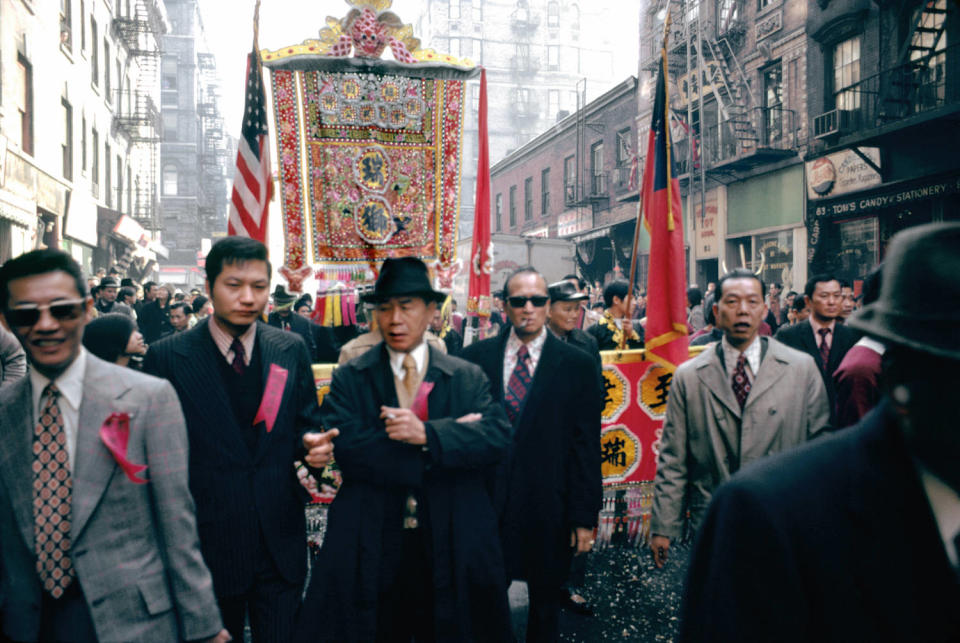New book chronicles half-century of Asian American life, through the lens of one photographer
- Oops!Something went wrong.Please try again later.
- Oops!Something went wrong.Please try again later.
When Corky Lee was in junior high school in New York City in the 1960s, he wondered why Asian Americans were missing from history class narratives about who had built America and who could be considered American.
In the decades that followed, the activist-photographer would dedicate his life to helping to make up for this omission by documenting Asian American history, culture and social movements.
Such is the project of “Corky Lee’s Asian America,” a 300-page retrospective of Lee’s most iconic photographs, which was published posthumously via Clarkson Potter earlier this month. Edited by visual artist Chee Wang Ng and historian Mae Ngai, the book chronicles 50 years of Asian American history, as seen through Lee’s lens. It represents the first time his body of work has been published as a collection. Lee died in 2021 at 73 from complications of Covid.

The more than 200 photos capture everything from canonical moments in racial justice activism in the 1970s to the quiet streetscapes of Manhattan’s Chinatown during the onset of the pandemic.
Lee, whose parents had emigrated from China, offers through his work commentary about the position Asian Americans occupy in our country’s racial politics. In an analysis of Lee’s photo depicting a Sikh American vigil following 9/11, MIT media studies professor Vivek Bald reflects on the limits of a politics of assimilation to protect Asian Americans from racist violence, which afflicted Sikh communities in the aftermath of the terrorist attacks.
“Like the young man in Lee’s photograph, our communities had to wrap ourselves in the American flag, as if it were a cloak of protection,” writes Bald in one of the book’s introductory essays. “I hope that we see more clearly the limits of pushing for acceptance in the nation as it is, with its ongoing violence and deep inequality.”

Throughout the book, essays like Bald’s — by prominent Asian American artists, writers and community advocates — provide historical context for the seminal, albeit seldom discussed, moments of Asian American history that Lee was so driven to memorialize. Ai Weiwei, Hua Hsu and Helen Zia are among those who pay tribute to Lee and his contributions to Asian American communities, from behind his camera and beyond. Many contributors knew Lee personally and considered him a friend.
“Corky was a legendary storyteller,” writes Ngai, in the book’s biographical segment. “Every photograph contained a mini-lesson in Asian American history and community life that he was eager to share.”
One of those lessons takes place in April 1975, when Peter Yew, a witness to a traffic dispute, protested the police treatment of a bystander. Yew himself was then arrested and beaten by cops at Manhattan Chinatown’s Fifth Precinct. One month later, upward of 20,000 protesters, hailing across generations and ethnic lines, marched in solidarity with him. Lee documented the march and the violent police confrontations that took place during it.

Lucy Yu, the owner of Yu & Me Books in Manhattan’s Chinatown, has a framed print of a scene from the Peter Yew protests in her store. A section of the store is dedicated to books on Chinatown, and among them is Lee’s photo book.
“Being a bookseller in Chinatown selling Corky’s book is such an honor,” Yu said. “It’s been lovely to be a part of experiencing a revival of decades of Chinatown history and activism through this kaleidoscopic lens.”
While all of the photos included in Lee’s book, of course, capture moments of the past, the book also aims to look to the future.
“There will never be another Corky Lee,” reads the book’s epilogue, written by the editors and Lee’s brother, John J. Lee. “But in a sense there will be many Corky Lees, inspired by his humanity, his smile, his work ethic, and his commitment to social justice.”
This article was originally published on NBCNews.com

